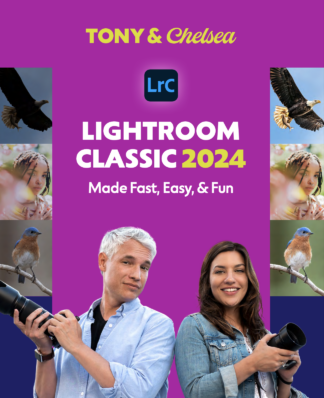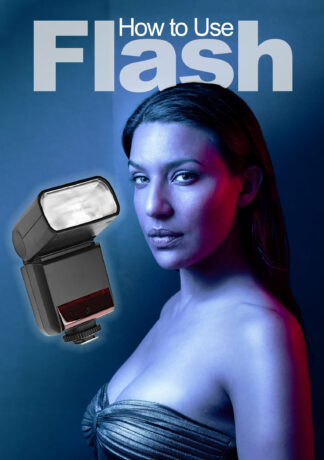First, your kit lens is fine for group photos. Individual portraits benefit from fast, telephoto lenses that make facial features more attractive and blur the background, as shown in the next picture. Portrait work isn’t particularly demanding on a camera’s autofocus system, so you don’t need to spend much on the body. However, full-frame sensors do blur the background better than compact cameras, as shown in the next picture. For detailed information, refer to Chapter 6 of Stunning Digital Photography.  If you’re buying your first camera and plan to take portraits, here are recommendations for complete kits at different price points. In addition to the gear listed here, you’ll need an inexpensive memory card—but portraits don’t require large-capacity or high-speed memory cards, so feel free to get something cheap:
If you’re buying your first camera and plan to take portraits, here are recommendations for complete kits at different price points. In addition to the gear listed here, you’ll need an inexpensive memory card—but portraits don’t require large-capacity or high-speed memory cards, so feel free to get something cheap:
- $500 budget: A Canon T3 body ($320), a Canon 50mm f/1.8 II ($100), and a Yongnuo YN-468 II ($90). Total: $510.
- $1,000 budget: A Canon T3 kit ($450), a Canon 85mm f/1.8 ($420), and a Yongnuo YN-468 II ($90). Total: $960.
- $2,000 budget: A Nikon D5300 kit ($850), a Tamron 70-200 f/2.8 Di LD IF ($770), and a Yongnuo YN-568 EX ($175). Total: $1,795.
- $4,000 budget: A Nikon D610 kit ($2,400), a Tamron 70-200 f/2.8 VC ($1,250), and a Yongnuo YN-568 EX ($175). Total: $3,825.
- $7,000 budget: A Nikon D810 ($3,300), a Tamron 24-70 f/2.8 ($1,300), a Tamron 70-200 f/2.8 VC ($1,250), and three Phottix Mitros+ flashes ($400 each). Total: $7,050.
Notice that I recommend Canon bodies for the less expensive kits, but Nikon bodies for the higher-end kits. Current Nikon sensors have slightly better image quality, but the Nikon versions of the basic portrait lenses (a 50mm f/1.8 and 85mm f/1.8) cost more than the Canon equivalents. Because the Canon lenses are less expensive, I recommend the camera system for lower budgets. These recommendations are for casual portraits with on-camera flash, but you might also need to set aside a budget for multiple lights, props, and software. For more about studio and location lighting, refer to the next question. Sony has capable portrait equipment, but has less third-party support (especially for flashes), and the Sony 70-200 f/2.8 is priced comparably to the Canon and Nikon varieties but is significantly less sharp. As mentioned above, these differences disappear if you use third-party lenses and monolights. Many mirrorless cameras are very capable for portraits, too. However, you can get the same effect for significantly less by buying Canon or Nikon DSLR equipment. For example, the Fujifilm X-T1 ($1,700) and the 56mm f/1.2 ($1,000) lens will cost you $2,700. You could get similar field-of-view and depth-of-field with a Nikon D610 ($1,900) and the Nikon 85mm f/1.8 ($500), but the full-frame Nikon will give you better image quality and you’ll have $300 left over for lighting. You’ll also have the option to add the more flexible 70-200 f/2.8 later; nothing equivalent is natively available for any mirrorless system.





